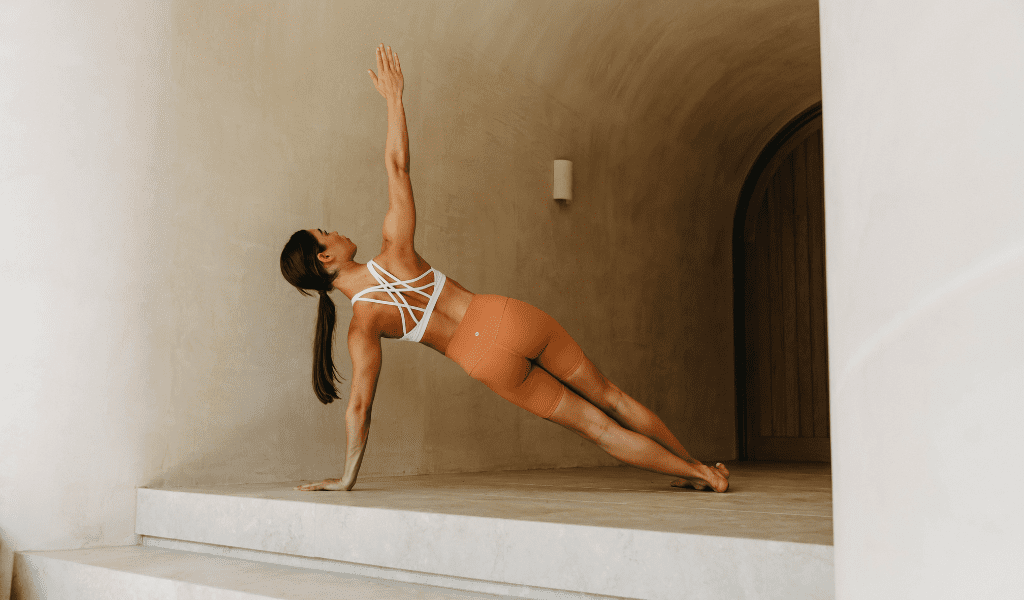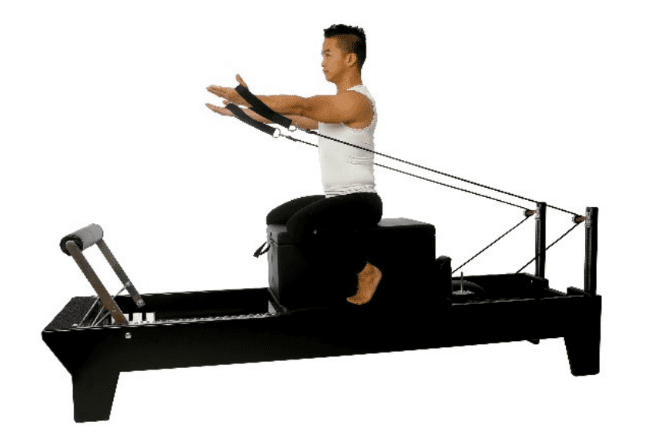Article categories, General Pilates Education, Training Principles
How Gravity Changes Which Muscles are Working in Pilates

One part of being a great Pilates instructor is knowing which muscles should be working in each exercise and understanding which muscles are responsible for particular movements. For example, we should know that the Biceps are responsible for elbow flexion and this helps us to know that Biceps should be working when we perform exercises which use this movement, for example, in exercises like Bicep Curls.
When we learn to become an instructor, we learn the textbook muscle movements and this serves us well in most cases! However, as with life, there are often exceptions to these rules in the real world. This is especially true in scenarios where the exercise adds in the variable of gravity. In certain Pilates exercises, gravity can actually alter and change which muscles are working, often changing the textbook muscle movements which we have learned. So it’s important for Pilates instructors to not only know the textbook muscle movements, but also how this can change based on how gravity works in the exercise.
Let’s take a look at a few examples of how gravity can affect which muscles are working.
SUPINE ABDOMINAL CURL

INHALE: T-Zone
EXHALE: Curl the body up
INHALE: Lower the body back down
The exercise Abdominal Curl is performed in a supine position. The movement predominantly involves spinal flexion to curl the body up and then spinal extension to lower the body back down onto the mat. We know that the abdominals (the Obliques and Rectus Abdominus) perform spinal flexion movements, so these abdominal muscles are working to overcome gravity and curl the body up.
When the body is lowered back down we are performing spinal extension and technically the Erector Spinae muscles perform this movement. However, because we have to resist against gravity when curling back down, it is actually the abdominal muscles which still work in this phase of movement. That’s not to say that the Erector Spinae muscles can’t activate during this movement, but the action of curling back down is greatly aided by gravity and it is predominantly the abdominal muscles which are recruited to resist against gravity to prevent the body from flopping down onto the mat.
So if we went by the textbook muscle movements it would be easy to assume that abdominals are only responsible for the curl up or spinal flexion movement of this exercise and the Erector Spinae muscles are responsible for the curl down or spinal extension movement of this exercise. However in reality, gravity changes what muscles are working. The curl up part or spinal flexion movement is where the abdominal muscles work concentrically (as we curl up, the attachment points of the muscles move closer together). The curl down or spinal extension part of the movement is where the abdominal muscles work eccentrically (as we curl down, the attachment points of the muscles move further apart whilst still contracting).
REACHING FORWARD

Let’s look at another example with Reaching Forward on the Reformer.
INHALE: T-Zone
EXHALE: Raise the arms
INHALE: Lower the arms
The movement for Reaching Forward predominantly involves shoulder flexion to raise the arms and then shoulder extension to lower the arms back down. We know that the Anterior and Middle Deltoids perform shoulder flexion movements, so these muscles are working to overcome gravity and raise the arms up.
When the arms are lowered back down, we are performing shoulder extension and technically the Posterior Deltoids perform this movement. However, because we have to resist against gravity when lowering the arms back down, it is actually the Anterior and Middle Deltoid muscles which still work in this phase of movement. Again, that’s not to say that the Posterior Deltoids muscles can’t activate during this movement, but the action of lowering the arms back down is greatly aided by gravity and it is predominantly the Anterior and Middle Deltoids which are recruited to resist against gravity to prevent the arms from flopping back down.
So while the textbook muscle movements say that Anterior and Middle Deltoids are only responsible for the shoulder flexion movement of this exercise and the Posterior Deltoids are responsible for the shoulder extension movement of this exercise, in reality, gravity changes what muscles are working. The shoulder flexion movement is where the Anterior and Middle Deltoids work concentrically and the shoulder extension part of the movement is where the Anterior and Middle Deltoids work eccentrically.
So what does this mean as an instructor? Well, it’s important for all instructors to be aware of which muscles should be working in all phases of an exercise and to know how gravity can affect which muscles are working. For example, in supine Abdominal Curl, if you know that the abdominals should be working during the spinal flexion AND spinal extension movements, then you can not only cue this activation during both phases of movement but also palpate the correct muscles in both phases of movement.